Nambu
World: Type I Rifle—The “Japanese Carcano”
The Type I rifle is a strange hybrid
with an interesting history. The Imperial Japanese Army controlled the arsenals
that made small arms and got priority in deliveries. When the war in

The left side.

The top of the action shows it is quite
different from the Type 38. Further down the page I show comparative photos.
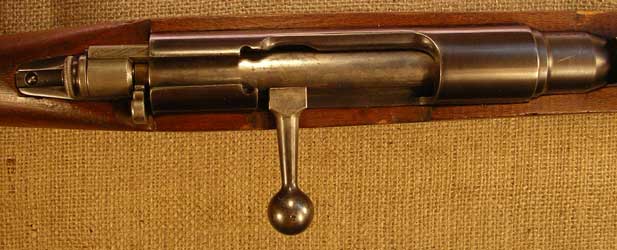
This is the action “at rest”, i.e. uncocked.
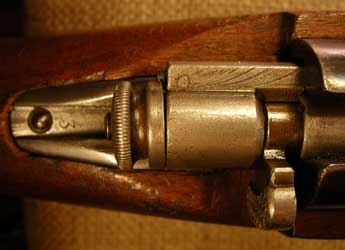
Here it is cocked…
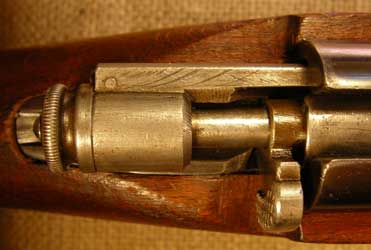
…and with the safety on. Never rely on a gun’s safety.
Always treat every gun as if it were loaded and ready to fire.
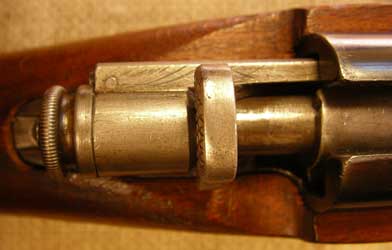
The serial numbers on these guns are
a letter from A to N followed by four digits. There is some controversy over
the number of these rifles that were produced, since the number of letters
times 9999 far exceeds the generally-accepted production figure of 60,000. The
rifles are almost devoid of any other markings. In particular, there are no
Japanese markings on them.
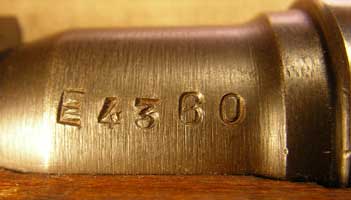
On mine there is this 03 on the top rear part
of the action.
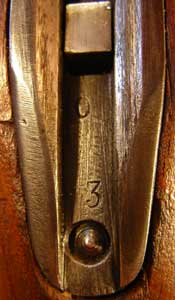
This is the bolt. One author has
suggested that the reason many of these guns were warehoused was that the
extractors and bolt handles were too brittle and prone to breakage, but this
view seems to have been based on anecdotal evidence and had not yet been
proven.
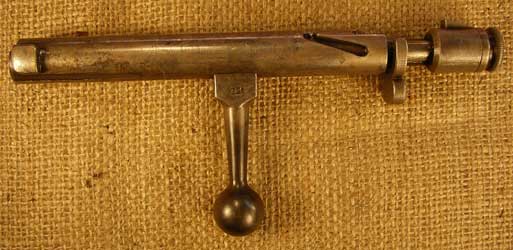
The underside of the bolt handle has
the letters PB, which may stand for Pietro Beretta, one of the manufacturers. It
could also be a proof mark, although it is not listed as an Italian proof mark
in “The Standard Directory of Proof Marks”. You can also see a faint trace of a
crown where the handle joins the bolt body. It is upside down and looks like a
half-hearted attempt was made to remove it.
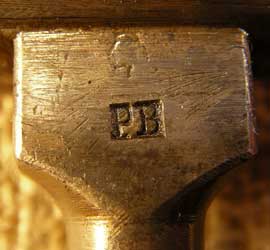
The same PB in stamped on the front face of the
safety.
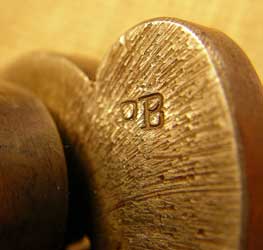
The ball on the end of the bolt handle also has
a small crown on top.

The shaft of the bolt has this small mark that
could be an N or a Z.
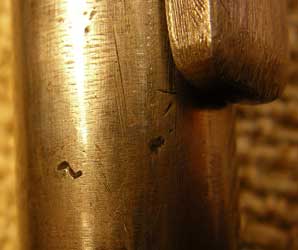
One of the conditions of the
contract with the Italians was that the rifle had to accommodate the standard
Japanese Type 30 bayonet. Here you can see that a Type 30 bayonet fits easily
onto this rifle.
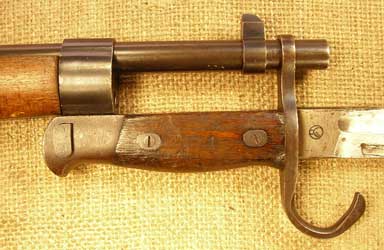
Now let’s compare the two rifles:
Type I on top, Type 38 below. In this photo the Type 38 has its dust cover
installed, but the Type I lacks any provision for this part. The Type 38 is
slightly longer. The trigger guard on the Type I is
larger and more square. The groove in the side of the stock is longer and more
pronounced on the Type 38. The front sights are different, too—more on that
below. Both have the two-piece stock typically found on Japanese rifles.

The rear sights are pretty similar, although
the Type I (on the left) has a notch sight rather than the peep sight used on
the Type 38 (right).
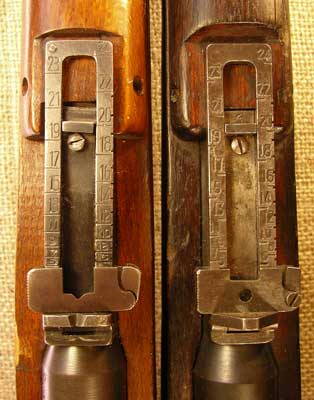
This side view shows that difference better.
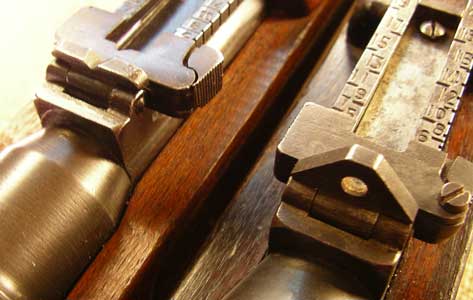
The Type I on the left has no wings
to protect the front sight, while the Type 38 sight on the right does have the
protectors. However, some Type 38s were made without the protective wings as
well.
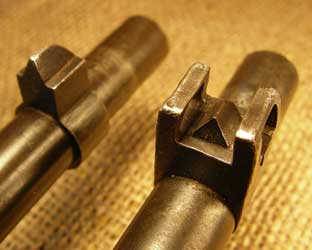
An overall view of the tops of the
actions of both rifles shows a variety of differences. Besides the rear of the
bolt, the Type I (upper part of photo) has a channel all along the top of the
receiver, while the Type 38 below it has a bridge in front of the bolt. The
Type 38 has a bolt release at the left rear of the receiver, while the Type I lacks
this mechanism (you just hold the trigger back to release the bolt). The Type I
also lacks the vent holes in the top of the receiver
that the Type 38 has (these holes allow gases to be vented safely upwards in
the event of a primer or case head rupture).
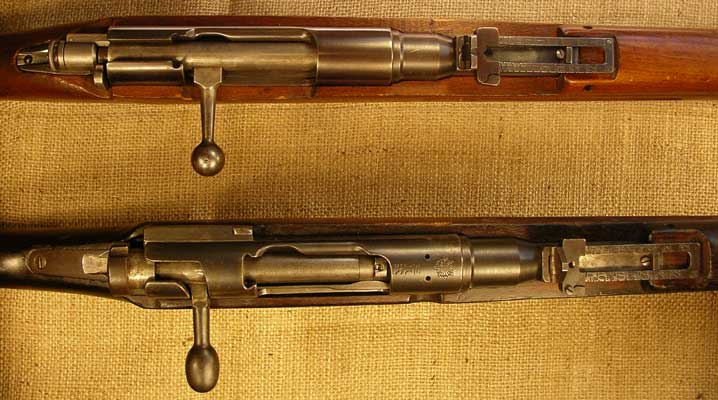
Here is a closer view of just the rear parts of
the actions, Type I on the left and Type 38 on the right.
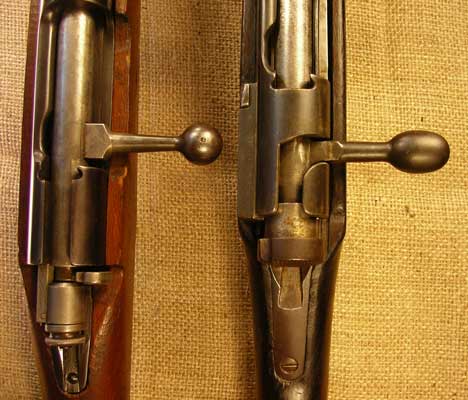
Here the bolts are removed so you can see
inside. Type I on top, Type 38 below.
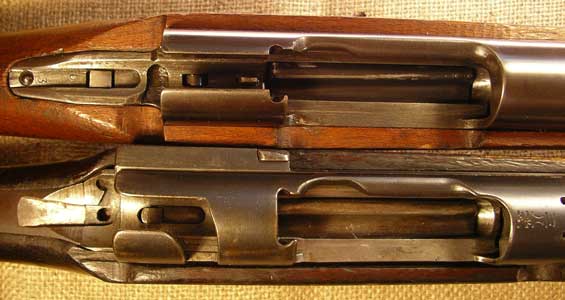
The tops of the butt plates are
different. The Type I butt plate just barely wraps around the top, while the
Type 38 extends further along the top and has a retaining screw there.
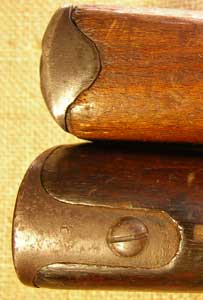
When I get a Carcano I will expand
this section with a comparison and some pictures of the Type I and standard
Carcano bolts disassembled.
Click here to go back to the Arisaka Rifle
Page: Nambu World: Arisaka and
Other Japanese Rifles
Click here to go back to the Other Militaria
Page: Nambu World: Other
Japanese Militaria
Click here to go back to the main page: Nambu World: Teri’s WWII Japanese
Handgun Website
Last updated: June 11, 2006. All contents are copyright Teri unless otherwise specified and may not
be used elsewhere in any form without prior permission.